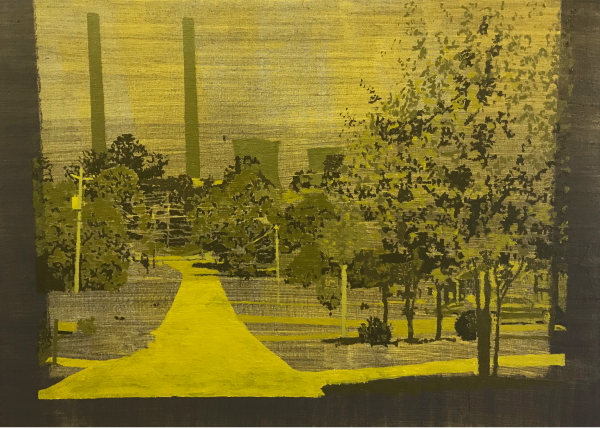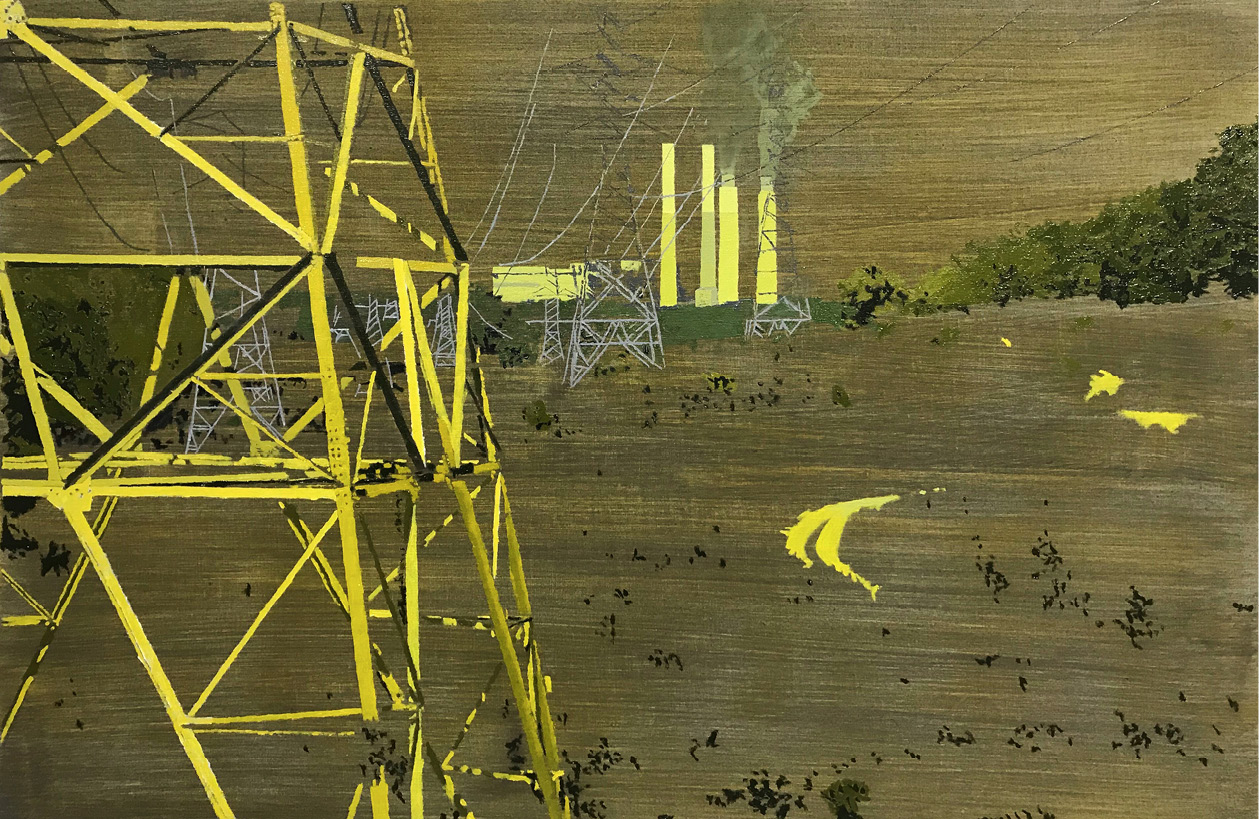Greg Lindquist takes his brush to the largest coal electric plants in the United States with his “Ashes to Ashes” series of paintings. They are not, it appears, generating much in the way of energy.
The structures look toxic and empty, their surroundings overrun by weeds. They cannot manage sunlight or even a storm cloud, much less warmth or a shower. Landscape often gains from a winter chill. For Lindquist, earth and sky alike have given way to a dystopian gray, yellow and green.
The culprit is coal ash, and Lindquist takes it as his medium as well as his subject. He often starts with a ground of ash mixed with acrylic, before painting in oil. Drawn-out brushwork makes scenes appear to dissolve before one’s eyes. Smaller marks here and there bury things all the more. So does the jumble of towers, trees and fences, at times holding the picture plane and at times messing with perspective. With or without energy, the paintings glow.

Greg Lindquist, Plant Bowen, Euharlee, Georgia (2017), courtesy of the artist and Lennon, Weinberg, Inc., New York.
Of Ash and Coal took him to Texas, Alabama, Georgia and North Carolina, but it could pass for a single site. Everything holds the scene at a distance, from the foreground vegetation to the simulated wood frame in oil. The colors suggest another distancing as well, that of a photographic negative or Photoshop. Still, Lindquist wants one to feel the damage viscerally, quite apart from the contribution of carbon emissions to climate change. Breathing and contact with coal ash has taken its toll on health, including the health of workers—who evidently wish they could breathe more of it. With the paintings, the ash can still get under one’s skin.
At the very moment of America’s ascendancy in art, Thomas Cole could not get over his fears that its greatness had already past. Nor were his concerns for America alone. If anything, he looked to his adopted nation for more open vistas and clearer skies than he had seen in industrial England. And he placed them front and center of the Hudson River School in American art. What, then, would he have made of coal country today?
Lindquist sees it as being beyond the point of crisis. Maybe Trump voters wanted their job security and their unquestioned status back, even as their region’s economy had moved on and their children had already left. Maybe Cole saw a human-induced apocalypse in the making in the skies of J.M.W. Turner. Forget it. Lindquist sees the drama as pretty much already over and done. Yet he also sees an unnatural beauty worth contemplating.
The paintings look mildly creepy at first, but they get better with acquaintance. They show observation, but also artifice. In a photograph, grass ameliorates the ugliness, and even fences look halfway inviting, but not here. Cole’s successors brought a greater optimism, and then another generation, including Winslow Homer, learned a more homespun naturalism from the Civil War. Trump’s party still benefits from one side in the war. If Lindquist has his way, both sides can benefit from remembering.


